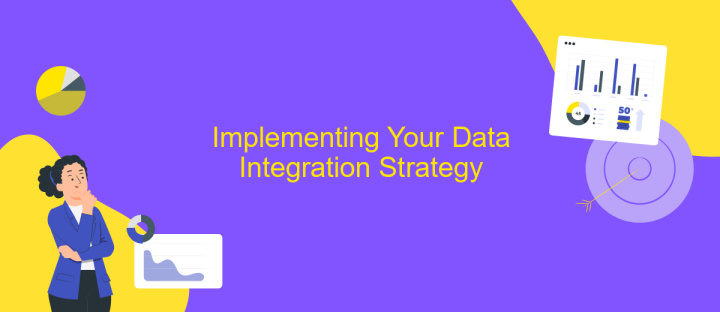Data Integration Solution Services
In today's fast-paced digital landscape, businesses are inundated with data from diverse sources, making efficient data integration crucial for informed decision-making. Data Integration Solution Services offer a seamless approach to consolidating disparate data, ensuring accuracy and accessibility. By leveraging cutting-edge technologies, these services empower organizations to streamline operations, enhance analytics, and gain a competitive edge, ultimately transforming raw data into valuable insights that drive growth and innovation.
Understanding Your Data Integration Needs
Understanding your data integration needs is crucial for creating efficient and effective solutions. Every organization has unique data sources, formats, and requirements, making it essential to tailor integration strategies to meet specific goals. Begin by assessing the current data landscape, identifying key data sources, and understanding how they interact with existing systems. This foundational knowledge will guide the selection of appropriate tools and methodologies.
- Identify and catalog all data sources, both internal and external.
- Determine the frequency and volume of data exchanges.
- Assess data quality, consistency, and compatibility.
- Define business objectives that data integration should support.
- Evaluate existing infrastructure and technology stack.
By systematically analyzing these elements, you can pinpoint areas that require attention and improvement. This process not only highlights potential challenges but also uncovers opportunities for optimization and innovation. A comprehensive understanding of your data integration needs ensures that the solutions implemented align with organizational goals, enhance decision-making, and drive business growth. Investing time in this initial step lays the groundwork for a successful data integration strategy.
Choosing the Right Data Integration Solution

Choosing the right data integration solution is crucial for businesses aiming to streamline operations and enhance data accessibility. Start by identifying your specific integration needs, considering factors such as data volume, source diversity, and real-time processing requirements. Evaluate the scalability and flexibility of potential solutions to ensure they can grow with your business. Additionally, assess the ease of use and the level of technical expertise required for implementation and maintenance. A user-friendly platform can significantly reduce the learning curve and improve adoption rates across your organization.
When selecting a service, consider leveraging platforms like ApiX-Drive, known for their seamless integration capabilities and extensive range of supported applications. ApiX-Drive offers a no-code interface, enabling users to set up data flows without extensive technical knowledge. This can be particularly beneficial for small to medium-sized enterprises that may lack dedicated IT resources. Furthermore, ensure the solution provides robust security measures to protect sensitive data during transfer and storage. By carefully evaluating these aspects, you can select a data integration solution that aligns with your business objectives and enhances operational efficiency.
Implementing Your Data Integration Strategy

Implementing a data integration strategy requires a clear understanding of your organization's goals and the specific data needs that drive them. Begin by assessing the current data landscape, identifying key data sources, and understanding how these sources interact with each other. This foundational knowledge will guide the selection of appropriate tools and technologies that align with your objectives.
- Define clear objectives and outcomes for your data integration efforts.
- Evaluate and select data integration tools that suit your technical environment.
- Develop a detailed implementation plan, including timelines and resource allocation.
- Ensure data quality and consistency through standardized processes and validation techniques.
- Monitor and optimize the integration process continuously to meet evolving business needs.
Successful data integration is an ongoing process that involves regular review and adaptation. As business requirements change, so should your integration strategy. Regularly update your integration tools and methods to leverage new technologies and maintain alignment with organizational goals. By doing so, you ensure that your data remains a valuable asset that supports informed decision-making and drives business success.
Managing and Maintaining Your Data Integration System

Effective management and maintenance of your data integration system are crucial for ensuring seamless operations and data accuracy. Regular oversight helps in identifying potential issues before they escalate and ensures that the system continues to meet organizational needs. Establishing a comprehensive management strategy is essential for long-term success.
To maintain your data integration system, it is important to implement routine checks and updates. This involves monitoring data flows, assessing system performance, and ensuring compliance with data governance policies. Regular updates to software and tools are also necessary to leverage new features and security enhancements.
- Conduct regular system audits to ensure data integrity and performance.
- Implement automated monitoring tools to detect anomalies in real-time.
- Schedule periodic software updates to maintain compatibility and security.
- Review and update data governance policies to align with regulatory changes.
- Provide ongoing training for staff to keep them informed about system updates and best practices.
By prioritizing the management and maintenance of your data integration system, you can enhance data reliability and operational efficiency. This proactive approach not only minimizes risks but also optimizes resource utilization, allowing your organization to focus on strategic initiatives and innovation.
The Benefits of Data Integration Solution Services
Data integration solution services offer a streamlined approach to managing and consolidating data from multiple sources, enhancing the overall efficiency of business operations. By unifying disparate data, organizations can gain a comprehensive view of their operations, leading to more informed decision-making. This integration not only reduces data silos but also improves data accuracy and consistency. With the ability to automate data workflows, businesses can save time and resources, allowing teams to focus on strategic initiatives rather than manual data handling.
Moreover, leveraging services like ApiX-Drive can further optimize data integration processes. ApiX-Drive provides a user-friendly platform that simplifies the connection of various applications and services without requiring extensive technical expertise. This enables businesses to quickly set up and manage integrations, ensuring that data flows seamlessly across systems. As a result, companies can enhance their agility and responsiveness to market changes, ultimately driving growth and innovation. By investing in data integration solutions, organizations can unlock the full potential of their data assets, fostering a more connected and efficient digital ecosystem.
FAQ
What is data integration, and why is it important for businesses?
How can businesses benefit from automated data integration solutions?
What should companies consider when choosing a data integration solution?
How does data integration improve data quality?
Can data integration solutions handle real-time data processing?
Apix-Drive will help optimize business processes, save you from a lot of routine tasks and unnecessary costs for automation, attracting additional specialists. Try setting up a free test connection with ApiX-Drive and see for yourself. Now you have to think about where to invest the freed time and money!

